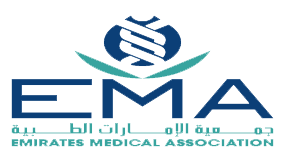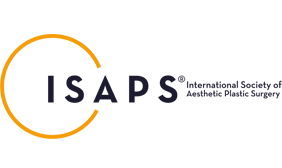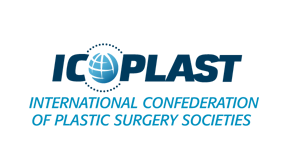Calf Liposuction Procedure
Why Do People Have Fat Calves and Ankles?
Genetic Factors
Genetics play a significant role in determining body fat distribution, including the accumulation of fat in the calves and ankles. Some individuals are predisposed to storing excess fat in these areas, regardless of their overall body composition. This genetic tendency can make it challenging to achieve slim, well-defined calves through diet and exercise alone.
Lifestyle and Diet
Sedentary lifestyles and poor dietary habits contribute to the development of fat calves and ankles. Lack of physical activity, coupled with a high-calorie diet rich in processed foods and sugars, can lead to overall weight gain, including in the lower legs. Additionally, prolonged periods of sitting or standing can cause fluid retention, further exacerbating the appearance of thick calves and ankles.
Hormonal Changes
Hormonal fluctuations, particularly in women, can influence fat distribution and retention in the lower legs. Pregnancy, menopause, and certain medical conditions affecting hormone levels may contribute to the accumulation of fat in the calves and ankles. These hormonal changes can make it more difficult to lose fat in specific areas, even with a healthy lifestyle.
- Common factors contributing to fat calves and ankles:
- Family history of thick calves
- Obesity or overweight status
- Lack of regular exercise
- High-sodium diet leading to water retention
- Certain medications affecting fluid balance
Why Fat Calves and Ankles Bother Women
Aesthetic Concerns
Many women feel self-conscious about the appearance of their calves and ankles, especially when they don’t match the proportions of their upper body. Thick calves can create an imbalanced silhouette, making legs appear shorter and less defined. This aesthetic concern often leads women to seek solutions for slimming their lower legs, including calf liposuction.
Book A Consultation With Dr Shehzadi Tasneem
Top-rated Plastic Surgeon For Liposuction in Dubai
Installment Plan Available
Liposuction Pricing Uae varies depending on the clinic and the amount of fat removed patients can expect to pay between 15000 to 40000 aed for a typical Liposuction Pricing Uae procedure
Difficulty in Finding Suitable Footwear
Women with fat calves and ankles often struggle to find boots and certain styles of shoes that fit comfortably. Standard calf sizes in boots may be too tight, limiting fashion choices and causing discomfort. This restriction in footwear options can be frustrating and impact personal style preferences.
Impact on Self-Confidence
The appearance of fat calves and ankles can significantly affect a woman’s self-esteem and body image. Many women feel less confident wearing skirts, dresses, or shorts that expose their legs. This lack of confidence can influence clothing choices and even social interactions, leading some to seek calf liposuction as a solution to boost their self-assurance.
- Common concerns expressed by women with fat calves and ankles:
- Feeling disproportionate or “bottom-heavy”
- Avoiding certain clothing styles or activities
- Experiencing discomfort in tight-fitting boots or shoes
- Feeling self-conscious in social situations involving leg exposure
Non-Surgical Alternatives to Calf Reduction 
Diet and Exercise
A balanced diet and targeted exercises can help reduce overall body fat, potentially impacting calf size. While spot reduction is not possible, a combination of cardio exercises and strength training can improve muscle tone and reduce fat throughout the body, including the calves. Exercises like calf raises, jumping rope, and cycling can help sculpt and define the lower legs.
Compression Garments
Wearing compression stockings or sleeves can temporarily reduce the appearance of fat calves and ankles by promoting better circulation and reducing fluid retention. These garments apply pressure to the lower legs, helping to smooth out the contours and create a slimmer appearance. However, the effects are temporary and only last while wearing the compression garments.
Radiofrequency Treatments
Non-invasive radiofrequency treatments can help reduce fat and tighten skin in the calf area. These treatments use heat energy to target fat cells and stimulate collagen production, potentially resulting in a slimmer, more toned appearance. Multiple sessions are typically required, and results develop gradually over time.
- Comparison of non-surgical calf reduction methods:
Method | Effectiveness | Duration of Results | Downtime |
Diet and Exercise | Moderate | Long-term (with maintenance) | None |
Compression Garments | Low to Moderate | Temporary | None |
Radiofrequency Treatments | Moderate | Several months to a year | Minimal |
How Calf and Ankle Liposuction is Performed
Pre-Operative Consultation
Before undergoing calf liposuction, patients meet with Dr. Shehzadi Tasneem Sultan for a comprehensive consultation. During this meeting, the doctor assesses the patient’s overall health, discusses their goals, and examines the calf and ankle areas. This consultation helps determine if the patient is a suitable candidate for the procedure and allows for personalized treatment planning.
Anesthesia Options
Calf liposuction can be performed under local anesthesia with sedation or general anesthesia, depending on the extent of the procedure and patient preference. Local anesthesia with sedation allows for a quicker recovery, while general anesthesia may be preferred for more extensive treatments or anxious patients.
Liposuction Techniques
Various liposuction techniques can be employed for calf and ankle fat removal. Vaser liposuction, a popular method, uses ultrasound technology to liquefy fat cells before removal, allowing for more precise contouring with less trauma to surrounding tissues. Traditional tumescent liposuction or power-assisted liposuction may also be used, depending on the patient’s specific needs and the surgeon’s expertise.
Post-Operative Care
After the procedure, patients are provided with detailed post-operative instructions to ensure proper healing and optimal results. This typically includes wearing compression garments, managing swelling with elevation and cold compresses, and following a specific activity schedule to promote recovery.
- Key steps in the calf liposuction process:
- Initial consultation and assessment
- Customized treatment planning
- Anesthesia administration
- Precise fat removal using chosen liposuction technique
- Closure of small incisions
- Application of compression garments
- Post-operative care and follow-up appointments
Recovery from Calf and Ankle Liposuction 
Immediate Post-Operative Period
In the first few days following calf liposuction, patients can expect some swelling, bruising, and discomfort. Pain medication may be prescribed to manage any discomfort. It’s crucial to wear compression garments as directed and keep the legs elevated when resting to minimize swelling. Most patients can return to light activities within a few days, but strenuous exercise should be avoided for several weeks.
Long-Term Recovery
Full recovery from calf liposuction typically takes several weeks to a few months. Swelling gradually subsides, revealing the new contours of the calves and ankles. Patients should attend all follow-up appointments with Dr. Shehzadi Tasneem Sultan to monitor healing progress and address any concerns. Final results may not be fully apparent for up to six months as the body continues to heal and adjust.
Tips for Faster Healing
To promote optimal healing and results, patients should follow these guidelines:
- Stay hydrated and maintain a healthy diet
- Wear compression garments as directed
- Engage in light walking to promote circulation
- Avoid sun exposure to healing incisions
- Massage the treated areas as recommended by the surgeon
- Attend all post-operative appointments
- Recovery timeline for calf liposuction:
Stage | Duration | Activities |
Initial Recovery | 1-2 weeks | Rest, light walking, compression wear |
Moderate Activity | 2-4 weeks | Return to work, light exercise |
Full Activity | 4-6 weeks | Resume normal activities, including exercise |
Final Results | 3-6 months | Enjoy the full benefits of the procedure |
Before and After Photos of Calf Liposuction
Real Patient Results
Before and after photos of calf liposuction patients demonstrate the significant improvements that can be achieved through this procedure. These images showcase the reduction in calf circumference, improved leg contours, and enhanced overall proportions. It’s important to note that results can vary between individuals based on factors such as initial calf size, skin elasticity, and adherence to post-operative instructions.
What to Expect
When viewing before and after photos, patients can expect to see:
- Noticeable reduction in calf and ankle circumference
- More defined ankle bones and calf muscles
- Improved leg shape and proportions
- Smoother contours along the lower leg
It’s crucial to have realistic expectations and understand that while significant improvements can be achieved, perfect symmetry or drastic changes may not always be possible.
- Factors influencing calf liposuction results:
- Initial calf size and fat distribution
- Skin elasticity and quality
- Patient’s age and overall health
- Adherence to post-operative care instructions
- Individual healing response
Benefits of Calf Liposuction
Improved Leg Contour
Calf liposuction can significantly enhance the overall shape and contour of the legs. By removing excess fat deposits, the procedure creates a more balanced and proportionate appearance between the upper and lower legs. This improved contour can make the legs look longer, slimmer, and more aesthetically pleasing.
Enhanced Muscle Definition
Reducing fat in the calf area can reveal underlying muscle definition that was previously obscured. This enhanced muscle visibility can create a more toned and athletic appearance, which is particularly appealing to those who have struggled to achieve this look through exercise alone.
Boost in Self-Esteem
Perhaps one of the most significant benefits of calf liposuction is the positive impact on self-esteem and body confidence. Many patients report feeling more comfortable wearing a wider range of clothing styles, including shorts, skirts, and form-fitting boots. This newfound confidence often extends to various aspects of their personal and professional lives.
- Additional benefits of calf liposuction:
- Easier fitting into boots and certain shoe styles
- More balanced body proportions
- Increased satisfaction with overall leg appearance
- Motivation to maintain a healthy lifestyle
- Improved comfort during physical activities
Personal Consultation with Dr Shehzadi Tasneem Sultan
What to Expect During Consultation
During your personal consultation with Dr. Shehzadi Tasneem Sultan, you can expect a thorough evaluation of your calves and ankles, as well as a discussion of your aesthetic goals. The doctor will review your medical history, assess your skin quality, and explain the calf liposuction procedure in detail. This is an opportunity to ask questions, express concerns, and gain a clear understanding of what the surgery can achieve for you.
Questions to Ask
To make the most of your consultation, consider asking the following questions:
- How many calf liposuction procedures have you performed?
- What liposuction technique do you recommend for my case?
- What kind of results can I realistically expect?
- Are there any risks or potential complications specific to my situation?
- How long will the recovery process take?
- Will I need to take time off work, and if so, for how long?
- Are there any alternatives to calf liposuction that might be suitable for me?
- Can you show me before and after photos of your previous calf liposuction patients?
- Key components of a calf liposuction consultation:
- Physical examination of the calves and ankles
- Discussion of medical history and current medications
- Explanation of the procedure and expected outcomes
- Review of potential risks and complications
- Presentation of treatment options and recommendations
- Opportunity for questions and concerns to be addressed
Preparation for Calf Liposuction
Pre-Operative Instructions
Proper preparation is crucial for a successful calf liposuction procedure and smooth recovery. Dr. Shehzadi Tasneem Sultan will provide detailed pre-operative instructions, which may include:
- Undergoing necessary medical tests or evaluations
- Adjusting or stopping certain medications as directed
- Quitting smoking at least several weeks before surgery
- Arranging for transportation and post-operative care
- Preparing your home for a comfortable recovery period
- Filling any prescribed medications in advance
Following these instructions carefully helps minimize risks and promotes optimal healing.
What to Avoid Before Surgery
In the weeks leading up to your calf liposuction procedure, it’s important to avoid:
- Taking blood-thinning medications or supplements without doctor approval
- Consuming alcohol or using tobacco products
- Crash dieting or making significant changes to your eating habits
- Exposing the treatment area to excessive sun or tanning beds
- Scheduling any other surgical procedures close to your liposuction date
Adhering to these guidelines helps ensure you’re in the best possible condition for surgery and reduces the risk of complications.
- Pre-operative checklist:
- Complete all required medical tests
- Arrange time off work for recovery
- Stock up on comfortable, loose-fitting clothing
- Prepare a recovery area in your home
- Fill all prescribed medications
- Arrange for a responsible adult to drive you home after surgery
Calf Liposuction Procedure
Step-by-Step Process
The calf liposuction procedure typically follows these steps:
- Anesthesia administration (local with sedation or general)
- Marking of the treatment areas on the calves and ankles
- Making small incisions in discreet locations
- Injection of tumescent solution to minimize bleeding and discomfort
- Insertion of the liposuction cannula to break up and remove fat
- Careful contouring of the calves to achieve desired shape
- Closure of incisions with sutures
- Application of compression garments
Throughout the procedure, Dr. Shehzadi Tasneem Sultan focuses on creating smooth, natural-looking contours while preserving the function and aesthetics of the calf muscles.
Duration of the Procedure
The duration of a calf liposuction procedure can vary depending on the extent of fat removal and the specific technique used. On average, the surgery takes between 1 to 3 hours to complete. However, this time frame may be longer if additional areas are being treated simultaneously or if more extensive contouring is required.
- Factors affecting procedure duration:
- Amount of fat to be removed
- Liposuction technique employed
- Number of areas being treated
- Patient’s individual anatomy
- Complexity of desired contouring
Results of Calf Liposuction
When to Expect Final Results
While some improvements in calf contour may be noticeable immediately after surgery, it’s important to understand that final results take time to develop. Initial swelling can obscure the true outcome of the procedure. Patients typically begin to see significant improvements within 4 to 6 weeks as swelling subsides. However, it may take up to 6 months for the final results to fully manifest as the body continues to heal and adjust.
Longevity of Results
The results of calf liposuction can be long-lasting, provided patients maintain a stable weight and healthy lifestyle. Fat cells removed during liposuction do not regenerate, but remaining fat cells can still expand if significant weight gain occurs. To maintain optimal results, patients should:
- Follow a balanced diet and regular exercise routine
- Stay hydrated and avoid excessive salt intake
- Wear compression garments as recommended during recovery
- Attend follow-up appointments with Dr. Shehzadi Tasneem Sultan
With proper care and lifestyle habits, the improved contours achieved through calf liposuction can be enjoyed for many years. Conscious fat removal helps people lose weight by making smart choices about food and exercise It teaches you to be aware of what you eat and how you move your body Natural breast enhancement uses herbs and exercises to try making breasts bigger without surgery
Compression garment maintenance Wash your Axillary reshaping results can make your underarms look smoother and more toned This procedure helps reduce excess skin and fat in the armpit area for a neater appearance
Airflow fat extraction uses strong air to remove fat from food This makes food healthier without changing how it tastes Local affordable liposuction
Refined body contouring helps shape your body by removing extra fat and tightening skin
- Factors influencing the longevity of results:
- Weight fluctuations
- Hormonal changes
- Aging process
- Lifestyle habits
- Genetic predisposition to fat storage
FAQ’s
What is calf liposuction?
Calf liposuction is a cosmetic surgical procedure designed to remove excess fat from the calf area to achieve a slimmer and more defined leg contour. This procedure is often sought by individuals who have stubborn fat deposits in their calves that do not respond well to diet and exercise.
How is the calf liposuction procedure performed?
The procedure involves making small incisions in the calf area, through which a cannula (a thin, hollow tube) is inserted. The cannula is used to break up the fat cells, which are then suctioned out. The procedure can be performed under local or general anaesthesia, depending on the extent of the fat removal and the patient’s preference.
What are the benefits and risks of calf liposuction?
The benefits of calf liposuction include a more toned and sculpted appearance of the lower legs, increased confidence, and improved overall body proportions. However, as with any surgical procedure, there are risks involved, including infection, scarring, uneven fat removal, and potential nerve damage. It’s essential to discuss these risks with a qualified surgeon before proceeding.












